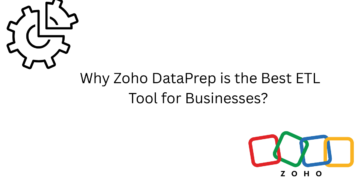In the evolving world of blockchain, Layer 2 (L2) solutions are no longer just an optimization—they’re a necessity. From enabling scalable dApps to supporting lightning-fast, low-fee transactions, L2 platforms like Optimism, Arbitrum, zkSync, and StarkNet are changing the blockchain game. But building on these protocols isn’t plug-and-play. You need a specialized Layer 2 development partner to turn your vision into a scalable, secure, and successful product.
Choosing the right L2 development partner is one of the most critical decisions you’ll make in your blockchain journey. Whether you’re launching a DeFi platform, NFT marketplace, Web3 game, or enterprise-grade blockchain solution, this guide will help you evaluate and select a partner who aligns with your goals and drives your project to long-term success.
Why You Need a Layer 2 Development Partner
Before diving into the selection criteria, let’s understand why a dedicated L2 development partner is vital:
- Complexity of Layer 2 Technologies: L2 protocols use advanced cryptographic methods like rollups (zk-rollups and optimistic rollups), validiums, and state channels. Building on these demands deep technical expertise.
- Interoperability Challenges: Integrating L2 solutions with L1s, bridges, wallets, and off-chain services can be tricky.
- Security Sensitivity: L2s must ensure robust security measures to prevent exploits during data aggregation, settlement, and bridging.
- Ecosystem Navigation: The best L2 partners bring access to communities, liquidity providers, launchpads, and other ecosystem enablers.
A trusted development firm brings both the technical muscle and strategic guidance to unlock the true potential of L2.
Key Factors to Consider When Choosing a Layer 2 Development Partner
1. Technical Expertise in Layer 2 Architectures
The first box to check is their hands-on experience with L2 protocols. Evaluate whether they have:
- Built or deployed projects on Optimism, Arbitrum, zkSync, StarkNet, Base, or other leading L2s.
- Expertise in zk-rollups, optimistic rollups, and data availability layers.
- Understanding of L2-native features like gas abstraction, fraud proofs, zero-knowledge proofs, and validity proofs.
- Experience integrating L1 smart contracts with L2 scaling solutions.
Ask for case studies or code samples that demonstrate their L2 knowledge. A genuine partner won’t hesitate to walk you through their previous deployments and how they handled specific L2 challenges.
2. End-to-End Development Capabilities
A great partner offers full-stack development services, covering:
- Smart contract development on Solidity, Cairo, Vyper, or Rust.
- Frontend and backend engineering for dApps, dashboards, or admin panels.
- Wallet integration (MetaMask, WalletConnect, etc.) with L2 compatibility.
- Tokenomics design and token creation for L2-native assets.
- Bridge deployment for cross-chain interactions.
- Gas optimization and transaction fee reduction techniques.
The ideal partner ensures your L2 application is robust, user-friendly, and ready for real-world scalability from day one.
3. Security and Audit Capabilities
Security is paramount in blockchain—and even more so in Layer 2 environments where bridges, data syncing, and off-chain computations can open new vulnerabilities.
Your development partner must:
- Follow secure smart contract development practices.
- Conduct internal and third-party audits of smart contracts and bridges.
- Implement L2-specific safeguards (e.g., monitoring fraud-proof submission in Optimistic Rollups).
- Provide bug bounty support and monitoring tools post-deployment.
Security breaches in L2 systems often have cascading effects on both layers. Choose a partner that builds with security as the foundation—not an afterthought.
4. Customizability and Scalability
One-size-fits-all solutions rarely work in blockchain. Whether you’re building a high-throughput NFT marketplace or a privacy-focused DeFi platform, you’ll need custom solutions.
Evaluate whether your partner can:
- Customize rollup parameters (batch sizes, transaction types, DA layers).
- Deploy application-specific rollups (app-chains or validiums).
- Optimize L2 throughput and latency for your unique use case.
- Support horizontal scaling through sharding, subnetting, or modular approaches.
The right partner doesn’t just replicate what’s been done—they engineer your product for growth and performance.
5. Experience With Ecosystem Integrations
L2s are not isolated—they’re part of a broader Web3 ecosystem. Your development partner should help integrate your product with:
- DeFi protocols (DEXs, lending, staking platforms).
- NFT standards (ERC-721, ERC-1155 on L2).
- Oracles (Chainlink, Band, Pyth for L2 compatibility).
- Bridges and cross-chain protocols (Hop, Wormhole, LayerZero).
- Explorers and analytics tools for monitoring activity on L2.
Strong ecosystem awareness ensures your project launches with liquidity, visibility, and usability from the start.
6. Track Record of Successful L2 Projects
Past success is a good predictor of future performance. When assessing potential partners:
- Ask for a portfolio of L2 projects they’ve worked on.
- Request performance metrics—TPS, user count, uptime, cost savings.
- Look for client testimonials or third-party reviews.
- Consider their developer community engagement (open-source contributions, forum discussions, etc.).
Avoid generic blockchain developers claiming L2 experience without proof. Your project deserves an L2-native team.
7. Agility and Time-to-Market Focus
The Web3 space moves fast. You need a partner who understands the urgency and can deliver quickly without compromising quality.
Evaluate their:
- Development timeline estimations for different modules.
- Team size and structure—in-house vs. outsourced.
- Agile methodology for iterative testing and deployments.
- Readiness to provide MVP builds, pilots, and testnet launches rapidly.
A nimble partner will help you go to market fast—before competition eats your opportunity.
8. Strategic Guidance and Consulting
L2 development is not just about writing code. Your partner should provide:
- Protocol selection advice (e.g., Arbitrum vs. zkSync based on use case).
- Tokenomics modeling and ecosystem strategy.
- Regulatory and compliance support.
- Go-to-market planning including launchpads and community building.
A true L2 partner works with you from ideation to adoption—not just during the build phase.
9. Support and Maintenance Services
Post-launch support is crucial, especially in the early stages of L2 adoption. Ensure your partner offers:
- Ongoing maintenance and bug fixing.
- Performance optimization as users scale.
- Feature upgrades and roadmap alignment.
- Community and feedback management.
L2 projects need continuous monitoring and iteration to stay competitive and secure. Choose a partner committed to long-term collaboration.
10. Cost Transparency and Flexibility
Last but not least—evaluate their pricing model. Look for:
- Transparent and itemized cost breakdowns.
- Flexibility in engagement models (fixed price, hourly, or milestone-based).
- Scalability of services as your project grows.
- Clear clauses for scope changes and post-launch costs.
While cheap developers might save money upfront, they often lack the depth needed for advanced L2 work. Invest wisely in a value-driven partner who balances cost and capability.
Questions to Ask Before Hiring a Layer 2 Development Partner
To make an informed decision, here are some smart questions you can ask:
- Which L2 protocols do you have hands-on experience with?
- Can you walk me through a successful L2 project you’ve built?
- What are the main technical challenges we might face with this protocol?
- How do you ensure security and conduct audits?
- What is your estimated timeline and project phases?
- Do you offer post-launch support and updates?
- How do you handle bridge integrations and cross-chain assets?
- What makes your L2 development process different from others?
The answers to these will help you gauge both technical depth and strategic maturity.
Final Thoughts
As blockchain moves into the next phase of mainstream adoption, Layer 2 Blockchain development is no longer optional—it’s foundational. Whether you want to reduce gas fees, scale to millions of users, or create a custom app-chain, having the right L2 development partner can make all the difference.
Don’t rush your decision. Look beyond flashy portfolios and dig into real capabilities, ecosystem fluency, and strategic alignment. A great partner doesn’t just build your product—they build your success story.



























